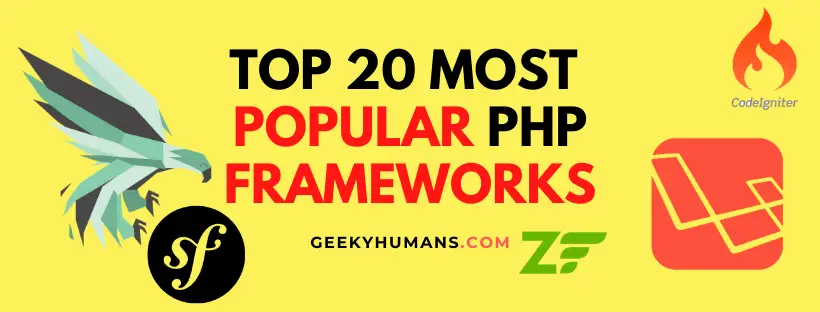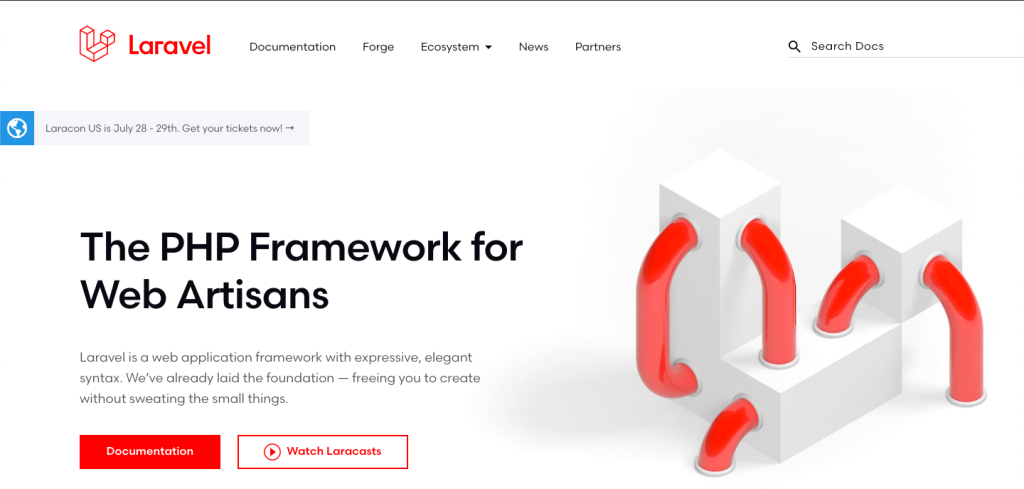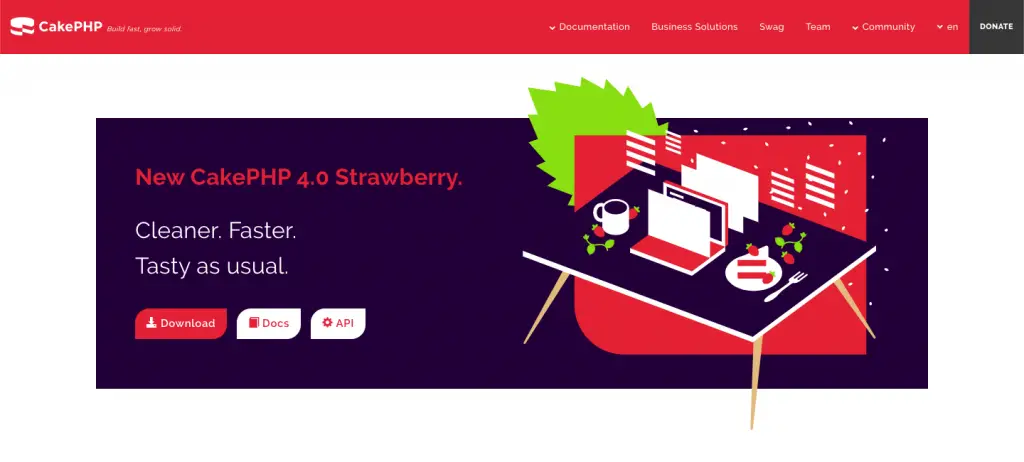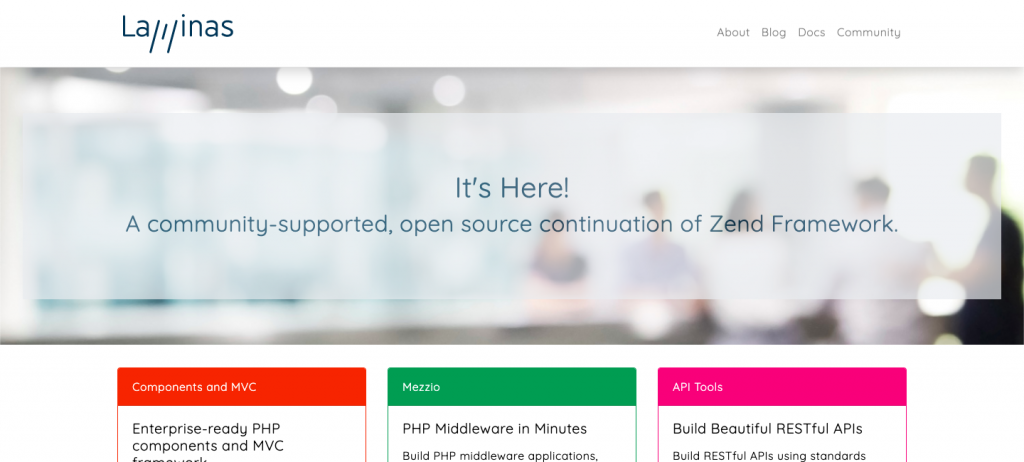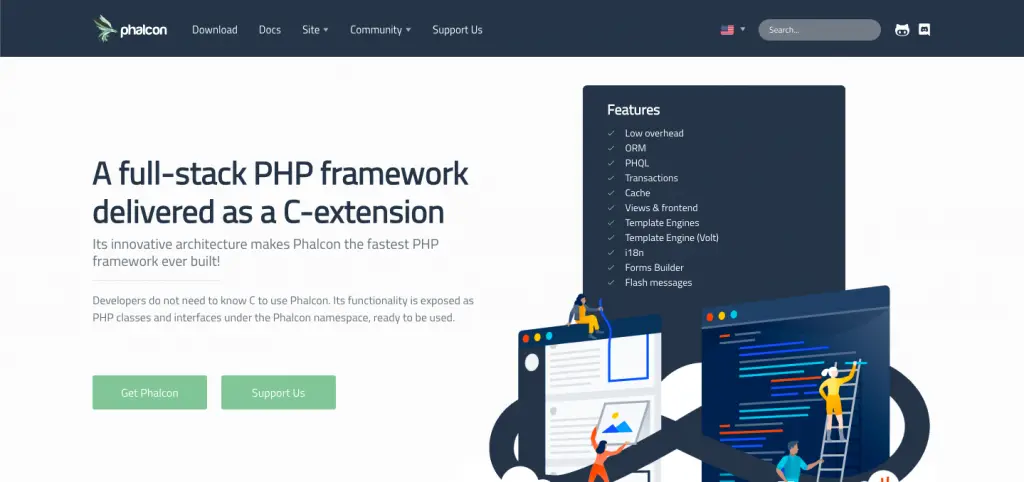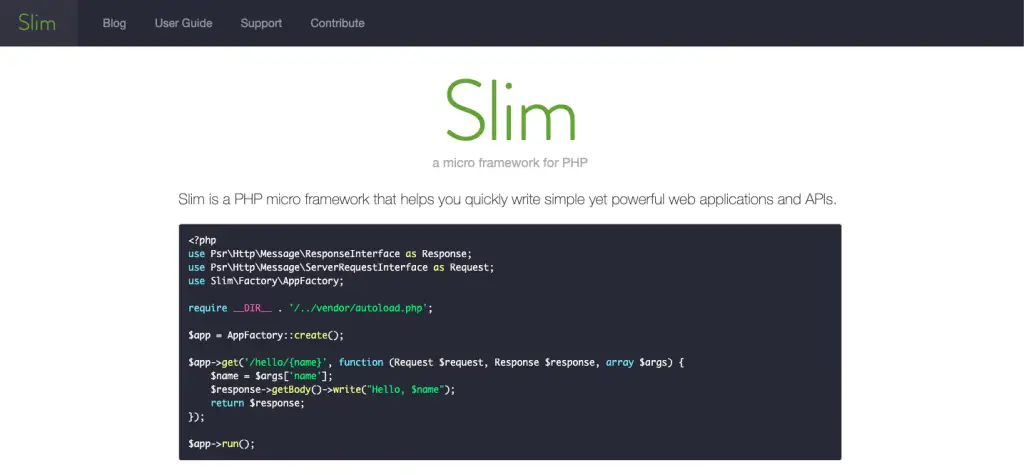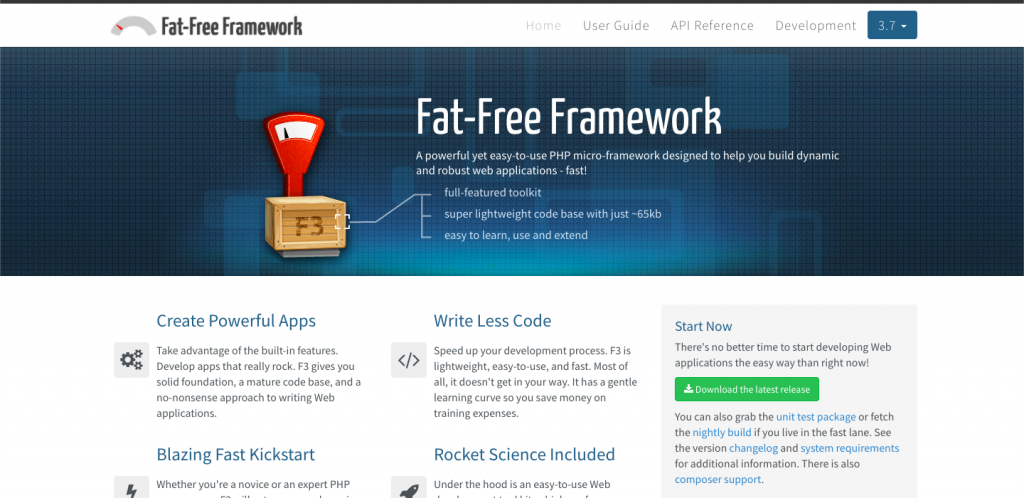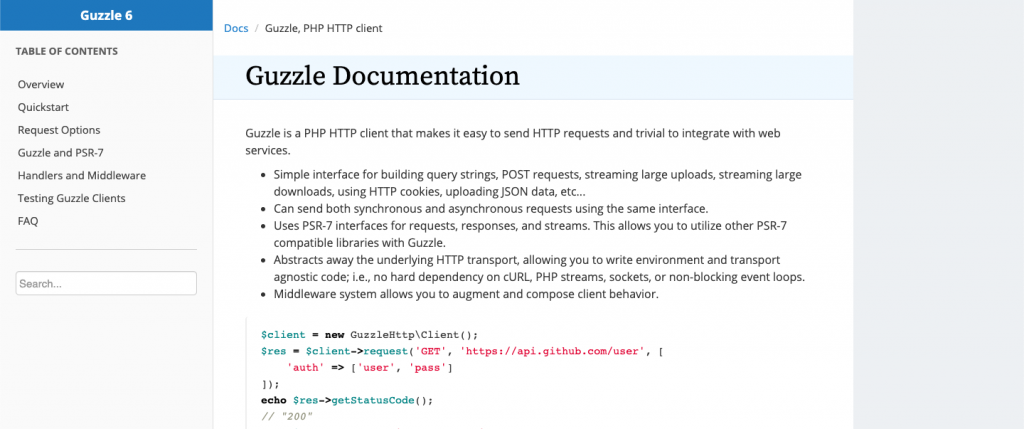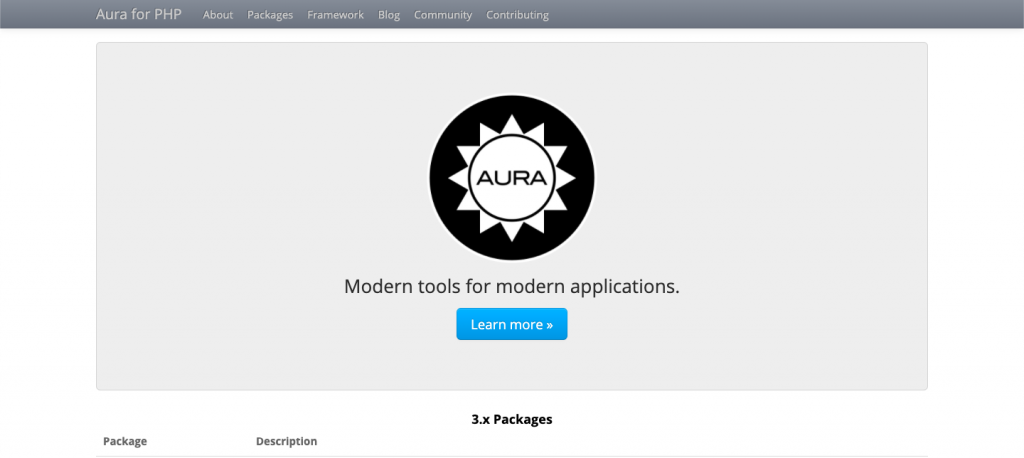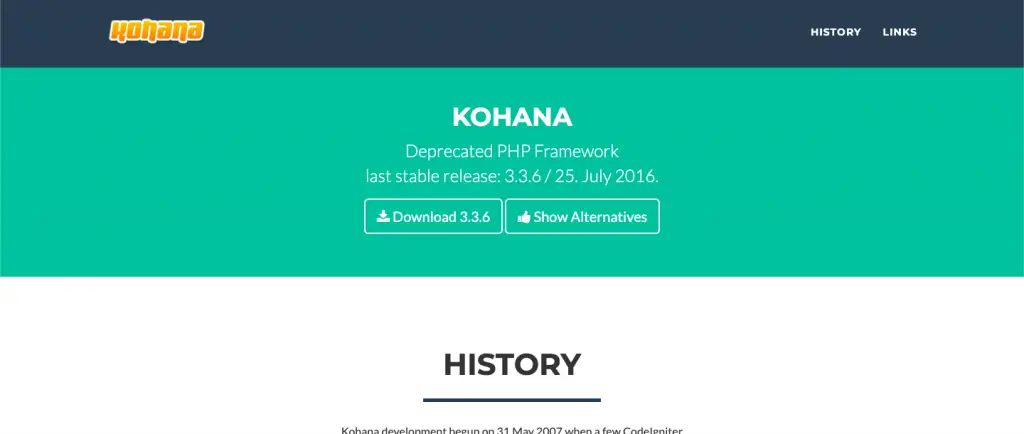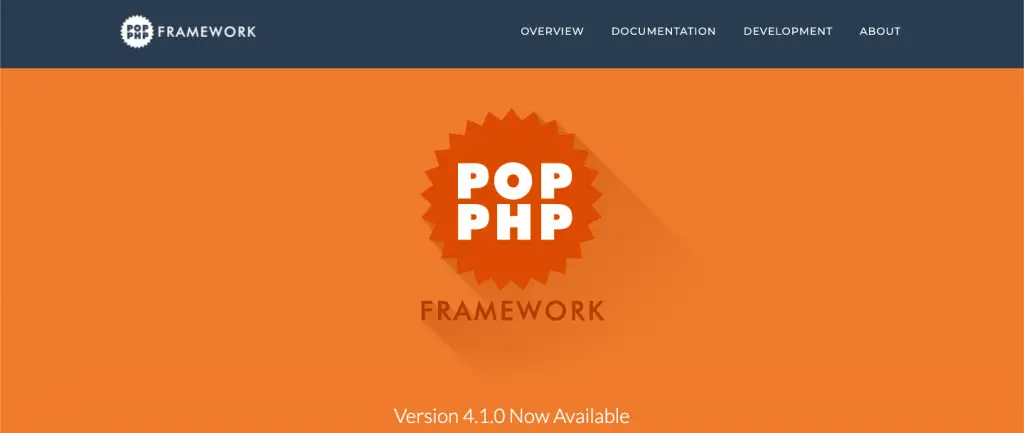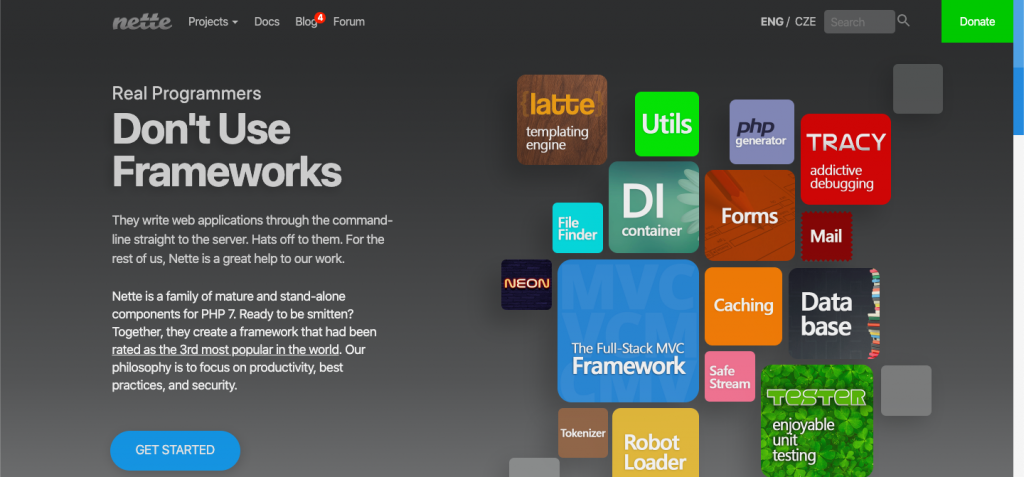PHP or Hypertext Pre-Processor is the most famous general-purpose scripting language used for developing websites. From your blog to the world’s most famous websites are using PHP and its framework for their flexibility and security.
Popular websites that use PHP and its frameworks:
- WordPress
- Yahoo
- Wikipedia
- Flipkart and many more
Till March 2020, about 82.1% of the websites we know, use PHP for server-side scripting.
So, how do you know which framework suits you better?
Are you Confused?
This post contains 20 best PHP frameworks that will help you to choose the right one for you.
Why you need a PHP framework?
PHP frameworks provide you flexibility, security, streamline and smooth process of building a website that meets all your professional and business requirements.
All its various features and modules will help you to speed up the development process.
So, what are you waiting for? Pick-up your framework from right below and start building a website.
Top 20 Popular PHP Frameworks
Here’s the list of all time the most famous PHP frameworks, based on their demands and ability to facilitate the development process.
-
Laravel

Laravel is a free, open-source and one of the best PHP frameworks introduced in June 2011. It was created by Taylor Otwell, and intended for the development of fast, secure web applications following MVC(Model, View, Controller) architecture.
Laravel is known for handling complex web applications securely and provide an easy platform for developers to create fast loading websites.
Why you should use Laravel?
- Laravel framework has some server requirements. All these requirements are satisfied by Laravel HOMESTEAD virtual machine that made installation very easy. So, is recommended to use HOMESTEAD as your local development environment.
- This PHP framework is best suitable for complex and fast websites. Its MVC architecture provides smooth data integration, security, view template engine, restful routing authentications of data and many more.
- Laravel is highly secure, and its speed of data management provides developers ease to develop B2B, E-Commerce, MLM, and enterprise websites that meet all modern requirements.
Installing Laravel on your machine:
Laravel uses composer to manage its dependencies. So, before installing Laravel make sure u have composer installed on your machine.
You can install Laravel using composer:
composer global require laravel/installer
-
CodeIgniter

Initially released on February 28, 2006. Was developed by British Columbia Institute Of Technology. Codeigniter is one of the oldest frameworks. It is an open-source framework used for developing dynamic robust websites with PHP.
Why you should use CodeIgniter?
- Codeigniter is a lightweight framework, easy to install and configure on your machine. Unlike other PHP frameworks, it has highly illustrated documentation, it’s best for beginners to start with.
- Codeigniter is partially based on MVC(Model-View-Controller) architecture. Model-View is optional, but the Controller is a necessary part of the development process. It enables the smooth way of data integration and management with the database.
- A slightly being modified, CodeIgniter also follows Hierarchical-Model-View-Controller(HMVC). It gives benefit to developers to maintain a modular grouping of MVC arranged in a sub-directory format.
- Faster is one of the strengths of CodeIgniter. It runs faster when it comes to database task compared with other PHP frameworks. PHP creator Rasmus Lerdorf personally recommend CodeIgniter for beginners. At Fresco on August 2008, he said I like Codeigniter “because it’s fast, lighter and easy to set up”.
- Codeigniter is faster. It is best suited for lightweight applications to run on small servers. But due to its frequent update releases, it isn’t a great option to use for an application that requires high-level security.
You can download CodeIgniter from here.
-
Symfony

Symfony is yet another PHP web application framework initially released on 22 October 2005. It was launched as free software under MIT Licence. Symfony is a framework with an active set of reusable PHP component and libraries.
When it comes to building large-scale websites, Symfony is the perfect choice among all the other PHP framework in the list. Symphony is the only framework that follows PHP and Web standards to the most.
Why you should use Symfony?
- Symfony is the best choice for developing large-scale projects. It’s easy to install and configure to most of the platform.
- This framework is used to speed up the creation and maintenance of web applications and also replace the repetitive coding task. It aims to build a robust application and give developers full control over configuration from directory to different libraries, everything can be customized in it.
- It is highly flexible and can integrate bigger projects. Symfony and Laravel have lot more same features, which make developers difficult to choose the better one.
- This framework is generally for advance developers due to its harder syntax which makes it difficult to start with.
- Symfony framework is used by many content management systems like Drupal, PHPBB and even Laravel itself uses it.
- Symfony has a huge ecosystem which can only be supported by an active community or advance developers.
Install Symfony: curl -sS https://get.symfony.com/cli/installer | bash
-
CakePHP

Cake PHP is also an open-source web development PHP framework. It’s based on MVC architecture and was released in April 2005. Being a decade old framework, it’s still among the most used PHP frameworks and gained a lot more new libraries and many new components.
If you are looking for a framework which is simple, reliable and elegant, Cake PHP is the best option to choose from.
Why you should use Cake PHP?
- CakePHP is simple and easy to install. Being an old decade framework, it has support from many community developers to keep it with the latest technology trends.
- Cake PHP is one of the easiest PHP frameworks to learn, especially because of its CRUD(Create, Read, Update, Delete) Operations.
- Due to its security features like SQL Injection prevention, input validation, cross-site scripting (XSS) protection, cross-site request forgery(CSRF) protection that makes it a good choice for commercial applications.
- Cake PHP provides great documentation with many unbeatable libraries that makes it different from other PHP frameworks.
Download CakePHP from here
-
Yii Framework

Yii is an open-source framework, its component is based on MVC architecture. The Yii framework stands for “Yes It Is”.
This framework is among the oldest framework and has recently come up with its new version Yii2 with lot more new features to get a popularity boost.Yii uses Object-Oriented programming methodology based on DRY(Don’t repeat yourself) coding concept.
Why you should use Yii?
- Yii 2 strong feature called Lazy loading technique, which makes it much faster than other PHP frameworks. It is best used for large-scale web development project because it has JQuery and Ajax features.
- Yii has a powerful class code generator called Gii that works on Object-Oriented programming in a web-based interface that allows you to generate the code you need.
- It also has an easy installation process. Furthermore, its robust security features make the framework suitable for developing e-commerce projects, MLM projects, CMS, forums and many more.
- Yii has a special feature which provides developers to avoid the complexity of writing SQL queries, as they can handle database data in terms of objects, which makes reusability of SQL queries.
You can download Yii from here.
-
FuelPHP

FuelPHP is a modular, flexible PHP framework released in 2011. Although it supports MVC pattern it also has its evolved version of Hierarchical Model-View-Controller(HMVC) at the architectural level.
This framework adds an optional class called Presenter that holds the logic needed to generate views. Presenter formally called ViewModel present between Controller and View layers.
Why you should use FuelPHP?
- FuelPHP is suitable for delivering end-to-end web solutions of specific size and complexities
- It comes with an authentication framework with many other unbeatable features and with good documentation.
- FuelPHP is modular and extensible that take care of security concerns by providing input and URL filtering and output encoding, restful implementation.
- It provides security facility beyond the ordinary security measures, making it a great option if security is a major concern and crucial of your project.
-
Laminas Framework (formerly Zend Framework)

Laminas is an open-source, object-oriented web framework. This PHP framework is a stable framework packed with special component and libraries, therefore it not preferred for small projects but has the ability to handle more complex ones.
This Framework was created with an agile methodology which helps developers to deliver high-quality apps to their enterprise clients. Laminas has partners like IBM, Google, Adobe and Microsoft. The current release of the Laminas framework is optimised for PHP 7, but it still supports PHP 5.5 onwards.
Why you should use Laminas Framework?
- Laminas framework has some cool features like drop-down editor with front-end technology support like (HTML, CSS, JAVASCRIPT), instant online debugging, PHP Unit Testing tools and database connected wizard.
- It is used for complex projects by a high community of developers, hence it is less preferred by beginners.
- This framework provides modularity that can integrate with external libraries and allow you to use a piece by piece component you want.
- Laminas provides you with all the cryptographic and secure coding tools you need to do things right.
- Some of the new features include simple cloud API, encryption tools and session management.
-
Phalcon
 Phalcon is a full-stack framework based on Model-View-Controller architecture. Released in 2012, it is an Open-source PHP framework.
Phalcon is a full-stack framework based on Model-View-Controller architecture. Released in 2012, it is an Open-source PHP framework.
Phalcon is said to be fast and efficient to use because it was written in C and C++ to obtain the highest level of performance and optimization possible. Since it’s delivered with C extension, you don’t have to learn C programming language.
Why you should use Phalcon?
-
- Phalcon libraries have many cool features like universal auto-loader, asset management, security, translation, caching and many more.
- It has well documented and very easy to use the framework.
- Phalcon is easy to install and suitable for highly configurable for the enterprise development project.
- This framework is fast and has optimised performance due to its efficient memory utilization. If you are looking for a framework to create a fast website, give it a try.
-
Slim

Slim is a light-weight, micro-framework that provides you with the facility to quickly develop a simple but powerful web-based application, Restful APIs and web services.
Why you should use SLIM?
-
- Slim has some cool features like URL Routing, client-side HTTP caching, session- and cookie encryption and it also supports flash message across HTTP request.
- It’s excellent for small web applications whereas a full-stack PHP framework is not really needed. In addition, having friendly documentation makes slim a user-friendly framework.
- Slim is easy to learn. Many developers use slim for developing Restful APIs and web services.
-
PHPixie

PHPixie is a new framework, released in 2012 with the goal of creating a high-performance framework for the read-only website. Just like FuelPHP, it also implements an HMVC design pattern.
Why you should use PHPixie?
-
- PHPixie components are 100% unit tested and require minimum dependencies.
- PHPixie has features like ORM(object-relational-mapping), caching, input validation, authentication and authorization capabilities.
- This framework provides an easy platform to start with social networking websites and web app development services.
- PHPixie is built using independent components. You can use its modules without actually using the framework itself. Since its new and less popular, it has less community of developers as compared to other PHP frameworks.
- This framework enables you to use HAMPL markup language, schema migration and has a sophisticated routing system.
-
Fat-Free
 Introduced in 2009, with 83KB source code is an open-source web framework distributed under GNU General Public Licence hosted by GitHub and Sourceforge. This framework seeks to combine a full feature set with the lightweight code base, easy to use and learn.
Introduced in 2009, with 83KB source code is an open-source web framework distributed under GNU General Public Licence hosted by GitHub and Sourceforge. This framework seeks to combine a full feature set with the lightweight code base, easy to use and learn.
Why you should use Fat-free?
- Fat-free includes a set of features like URL router, cache engine and supports multilingual applications.
- Fat-free has the number of plugins that enhanced its functionality as well as data mappers for SQL and NoSQL database like SQLite, MySQL, MongoDB, PostgreSQL, MSSQL, Sybase, CouchDB, Flat File, and DB2.
- It also contains some optional plugins, among them, are a unit testing toolkit, Database managed sessions, Image Processors, Geodata handler, shopping cart applications, and data validation.
- Its lightweight source code base is controlled by a small core team, with additional funding contribution coming from various enterprise developers making it gain popularity in today’s scenario.
-
Guzzle PHP
 Guzzle is a PHP HTTP client that is used to send HTTP requests and to integrate with web services.
Guzzle is a PHP HTTP client that is used to send HTTP requests and to integrate with web services.
Why you should use Guzzle PHP?
-
- Guzzle can send both synchronous and asynchronous request using the same interface.
- It provides a terminal for building POST requests, streaming large uploads, query strings, streaming large download, using HTTP cookies, uploading and retrieving JSON data and many more.
- Guzzle uses PSR-7 interface for request, response and streams. It also allows you to utilize other PSR-7 compatible libraries.
- Guzzle allows you to write environment based and transport sceptic code; i.e., no hard dependency on cURL, PHP streams, sockets, or non-blocking event loops.
- The preferred way to install guzzle is with the composer. It’s mandatory to have a composer before installing guzzle.
- The command for installing guzzle:
php composer.phar require guzzlehttp/guzzle:~6.0
-
Aura

An open-source UI framework for developing dynamic web applications for mobile and desktop devices. It supports multi-tier component development that bridges between client and server. Aura has rich and compatible components that provide kick start building apps.
You don’t have to optimize your app for different devices as a component will take care of it for you. This framework intelligently connects with your server, device, browser, and network so that you can only focus on your logic and interaction of your apps.
Why you should use Aura?
- Aura is open-source. Its source code is present on GitHub and can be modified anytime. You can even contribute to bug fixes or functionality changes.
- Aura is purely on object-oriented principles, it provides a basic construct of Inheritance, polymorphism, encapsulation and applies them to presentation layer development.
- Aura highly utilizes events to interact with different components. It supports touch events, click events, mouse events, keyboard events, etc.
- Auro is fast, heavily tested for mobile-first options. Having the ability to transition between desktop and mobile, has its scope in the future.
- Aura provides incredibly powerful tools to create applications for all platforms. Spend some time to learn aura and get a head start in the future.
-
Kohana

Kohana is an open-source, MVC web development object-oriented framework built using PHP5. It is licenced under BSD and hosted on GitHub, so you can use this framework by extending its features to develop your own professional or personal website. It is considered to be strong MVC framework after Codeigniter.
Why you should use Kohana?
-
- The important feature of this framework is HMVC which allows easily to access its class methods, functions or even files.
- In Kohana, there is no configuration that if you want to use the class in the project it will automatically call the class or means it will load the class.
- Since Kohana follows HMVC so it gives seamless scalability to project so. If you want to make heavy project you might be considering scalability as an important factor. You can split your project into modules so that it will also handle the dependencies, so it is easy to go with Kohana.
- Kohana has an excellent routing feature with which we can easily manage our URL.
- Kohana is strictly based on OOP concept, it offers many features such as visibility protection, automatic class loading, overloading, inheritance, abstraction.
-
Silex PHP

Initially released in September2010, it’s a micro web framework based on Symfony, Twig and Doctrine. The main purpose of Silex is to be lightweight as you need to be, it made to be easy as possible to add new features and extend the silex base.
Silex is used to create small web applications like Rest API. Silex is available in two versions ie ‘fat’ and ‘slim’. The difference between fat and slim is that fat version is fully featured that includes data abstraction and template engine. Whereas slim contain basic routing engine.
Why you should use Silex?
-
- Silex exposes an concise API.
- Silex uses symphony Http kernel that abstract request and response. This makes very easy to test app and framework itself.
- In silex, you can define controllers and map them to routes, all in one step.
-
Flight
 Flight falls under well knows PHP framework list. It is microstructured which is a very simple, swift and flexible framework. Flight requires PHP 5.3 and is licensed under MIT, hence its an open-source framework. The flight is hosted on GitHub, so anyone can contribute in its Updation and bug fixes.
Flight falls under well knows PHP framework list. It is microstructured which is a very simple, swift and flexible framework. Flight requires PHP 5.3 and is licensed under MIT, hence its an open-source framework. The flight is hosted on GitHub, so anyone can contribute in its Updation and bug fixes.
Why you should use Flight?
-
- Developers use flight because it provides tools to handle the usual development task such as class loading and routing.
- Flight provide an easy platform to build heavy websites easily and promptly, which is the best part of the flight.
- Since Flight uses static methods, it does not require an application class to be instantiated.
-
Medoo

Medoo is a lightweight, straightforward, to learn and works well with other PHP frameworks. This framework used to accelerate development and is free to use. Licensed under MIT Licence, hence it is open-source. You can use framework anywhere, whatever you want.
Why you should use Medoo?
-
- Medoo is lightweight up to 100kb, portable in one file.
- Medoo is extremely easy to learn and use. It’s user friendly.
- Supports complex SQL queries, data mapping, and SQL injection.
- Medoo is compatible for almost every Database including MySQL, MSSQL, SQLite, MariaDB, PostgreSQL and many more.
- Works well with every other PHP frameworks like Laravel, Codeigniter, Yii, slim which supports singleton extension and composer.
-
POP PHP

An open-source PHP web framework that was created by Nick Sagona. It’s licensed under BSD licence and hosted on GitHub, that means changes and Updations are welcome. It was firstly released on 19 March 2012.
Why you should use POP PHP?
-
- POP PHP is also referred to as ‘POPCORN’. It’s a small scale framework that is used to develop Rest applications and APIs.
- The POP PHP has a strong structural configuration, although it is easy to use with compelling API.
- This framework by default uses limited web-based components, however, developers can add components and module when needed.
-
Nette

Nette is an open-source framework, Which allows in building web-based applications for PHP5 and 7. It supports code reusability, DRY(Don’t Repeat Yourself), Ajax and MVC. The released version was created by David Gruel, and Nette was further improved by Nette foundation. It is licensed under GNU GPL version 3.
Why you should use Nette?
-
- Nette allows you to build websites by checking security loopholes like XSS, CSRF, session fixation, session hijacking, among others.
- Some cool features like AJAX/AJAJ, dependency injection, DRY, MVC, Web2.0 and cool URL.
- Safety traps like CSRF are avoided.
- Debug tools allow used to debug efficiently.
-
Agavi
 Agavi uses MVC architecture, licensed under LGPL. It supports PHP5 and above. It is an incomplete tool to build a website, instead, you are expected to use Agavi as a small chunk glued together. Because of the fact that Agavi has small built-in functions, developers have the freedom to implement their own functions in a coding process.
Agavi uses MVC architecture, licensed under LGPL. It supports PHP5 and above. It is an incomplete tool to build a website, instead, you are expected to use Agavi as a small chunk glued together. Because of the fact that Agavi has small built-in functions, developers have the freedom to implement their own functions in a coding process.
Why you should use Agavi?
-
- The code is neat and maintainable.
- The third-party functions can be added as extensions.
- RestApi can be used through Agavi.
- Customization of user authentication and input validation can be done easily.
- Agavi can be accessed by SOAP, HTTP protocol commands.

